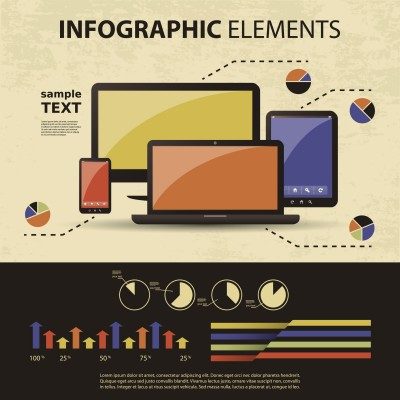Over the past few years, businesses have begun to use infographics to engage an audience with facts and figures that otherwise are static numbers in a simple slide report. Visual.ly, a company that specializes in this type of data visualization, has a blog that I encourage everyone to explore if they want to be both educated and entertained at the same time. This blog showcases how infographics can explain the history of American nutrition, use an old joke about two cows to summarize the governments of countries around the world or even illustrate the details of the recent National Security Administration surveillance scandal.
While these topics are arguably easier to visualize than something like a high-tech product launch or cloud computing, there is no telling what insights can be spread using the power of illustration. That being said, there are bad infographics out there.
Here are four rules for making infographics that rock:
1. Use data that is narrow, but runs deep. Sticking to one narrow topic but showing as much data directly related to that topic as possible gives the reader a feeling of deep exploration.
2. Don’t Get Wordy. Paragraphs can be overwhelming and hard on the eyes in an infographic, so it’s better to be as concise as possible.
3. Put it into Pictures. Charts, no matter how basic, are not as powerful as a unique and compelling illustration to help readers understand the research.
4. Create a story from the data. It’s tempting to put a lot of data on a page with pretty pictures and call it an infographic, but that is only half the battle – yes, even if there are arrows taking the reader from one thought to another. If you can use the images and the data to create a narrative arc, a reader will immerse herself and lose track of time, as you probably already did on the Visual.ly blog (linked here again for those who ignored it earlier).
Everyone is inundated with so much content on a regular basis that they tend to gravitate to the stuff that’s easy to digest and pleasing to the eye. In doing so, they push aside the data that could potentially enrich their lives and help them get to know your brand or product. Infographics keep data afloat in a busy world, and thus are a major part of a solid thought leadership campaign.


